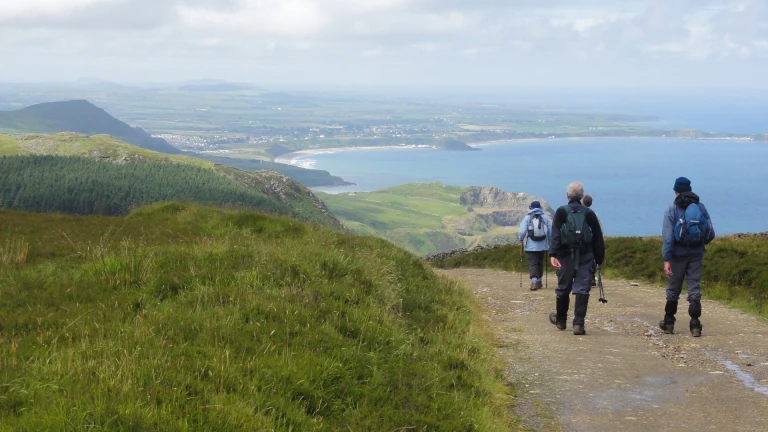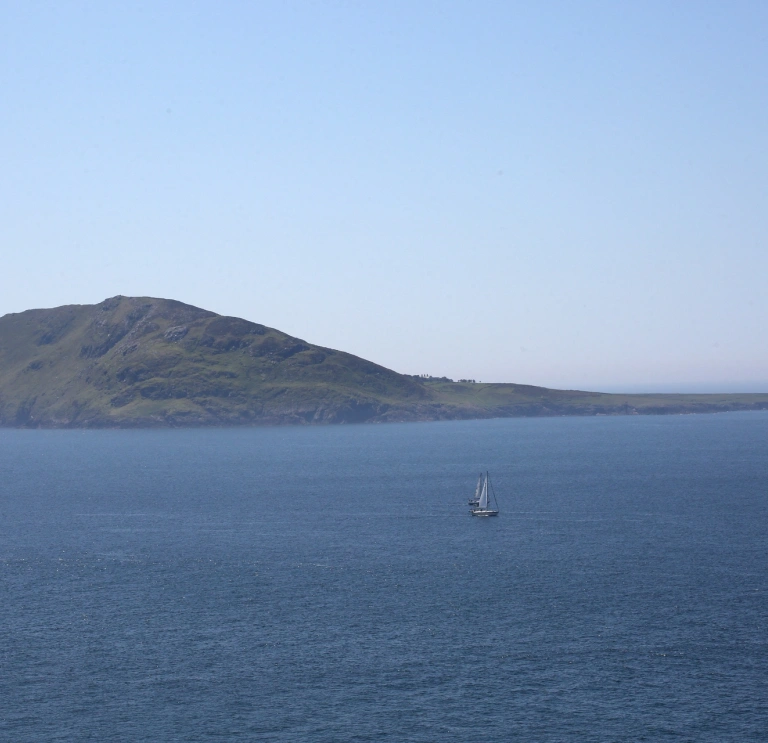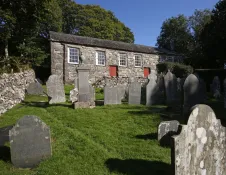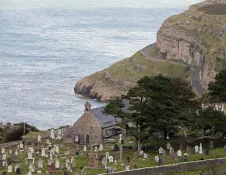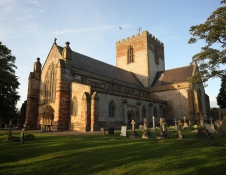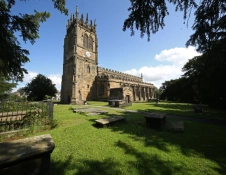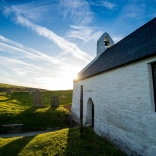The idea of our country brimming with faith could have begun here, in the wilds of North Wales. These are the lands that bore a bishop who translated the bible into Welsh, remarkably, in the 16th century. It's where a teenage Mary Jones walked 26 miles, barefoot, to get her hands on a copy. It's also where a rural church inspired one of our most famous paintings. And that's just the start.
We also have farmhouse chapels, holy wells, and islands of Christian pilgrimage that are also home to puffins (of course). Head north, and your soul will sing resonantly whatever your approach to faith, like a baritone in the pews.
Places of faith in North Wales by area
Gwynedd and Pen LlŷnGwynedd
Mary Jones Pilgrim Centre, Llanycil, Y Bala
Let's begin in our rugged and rural north-west. Every Welsh schoolchild can tell you about Mary Jones, the 15-year-old from the Eryri (Snowdonia) village of Llanfihangel-y-Pennant, who walked over the mountains to Y Bala to get one of the first bibles in Cymraeg. 26 miles is quite a feat for any teenager, granted – just imagine doing so in the rolling, roadless countryside of 1800.
Through multimedia and interactive displays, exhibits and activities, Canolfan Pererin Mary Jones Pilgrim Centre, which is set in the old Llanycil church, tells the story of Mary's extraordinary journey, and what happened next. In short, she inspired clergyman Thomas Charles to encourage the translation of bibles all over the world – and he is buried here, in the church graveyard.
This Bible Society-run Visitors' Centre is set in a glorious location, ideal for picnics by the water. Its Caffi Pererin also serves lunches, hot drinks and cakes. You can do Mary's walk too: a leaflet laying out her trip is available in the visitors' centre. The centre is open daily from April throughout the summer (for opening times and details on how to book trips out of season, visit the Mary Jones Pilgrim Centre website).
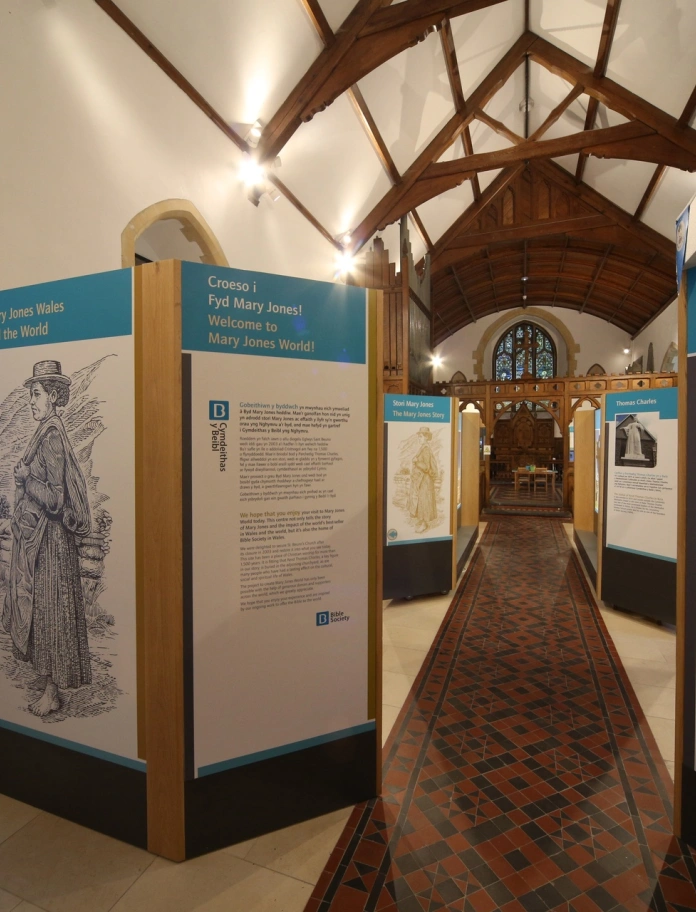
Capel Salem, Pentre'r Gwynfryn, Llanbedr
If you're Welsh, you'll know the old, eerie painting of Salem instantly. In the centre is an old Welsh woman walking between pews, a tall black hat on her head, a shawl creeping over her left arm creating a devilish illusion. The blue paisley detail in the crook of her elbow? This was rumoured to be the devil's eye. Her elbow itself? The devil's nose. A fold of material, his mouth, the shawl's fringing, the devil's beard....and even though Salem's English painter, Sydney Curnow Vosper, denied making these effects deliberate, he admitted he'd put a ghostly figure in the chapel window.
Painted in 1908, Salem is a real Baptist chapel: Capel Salem, in the Gwynedd hamlet of Pentre'r Gwynfryn. Its characters were real people too, including formidable local widow, Siân Owen, at the front of the scene. The painting became so well-known because it was given away as a gift with Sunlight Soap, at a time when the working-class Welsh couldn't afford to buy pictures to hang on their walls. It was also used by the passionate Welsh youth movement Urdd Gobaith Cymru, to help promote the use of the Welsh language.
The original painting itself now hangs in the Lady Lever Art Gallery in Merseyside, but the beautiful chapel still holds services in the summer, and is usually open every day (the key is kept at the Chapel House nearby). Step inside, feel the hairs rise on your neck – and leave your shawl at home.
A second version of the painting (originally done for Sydney Curnow Vosper's brother-in-law) was recently bought for Wales by the National Library of Wales.
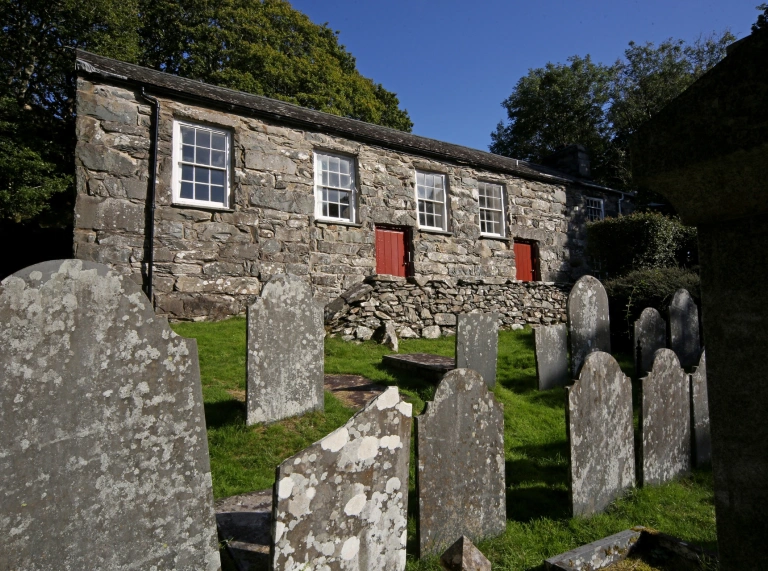
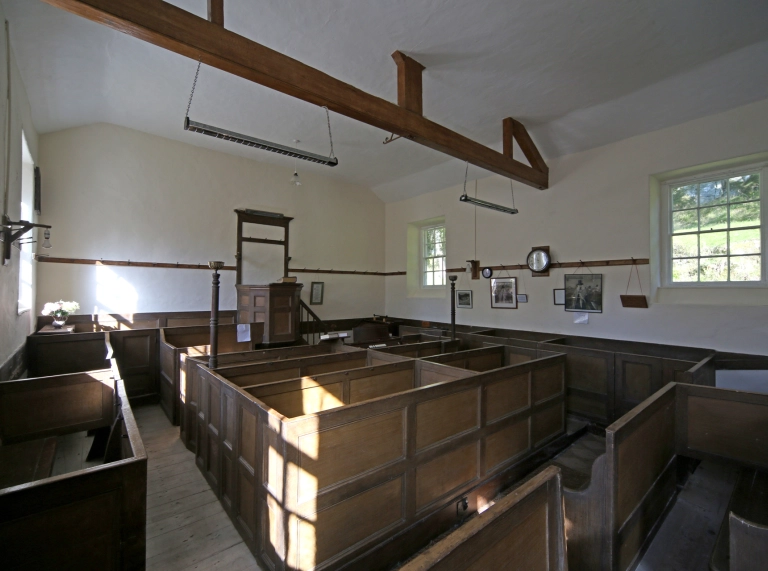
Tŷ Mawr Wybrnant, Betws-y-Coed
This corner of Wales has always been deeply tied to the Welsh language, and in the heart of the Conwy Valley, you'll find Tŷ Mawr Wybrnant. This was the birthplace of Bishop William Morgan who first translated the bible into Welsh in 1588, nearly two decades before the King James' Bible was published in England. Morgan's brilliant academic endeavours directly contributed to the saving of the Welsh language, with his version still being used in Welsh churches well into the 20th century. His house has been restored by the National Trust, as a testament to that wonderful legacy.
The house itself offers a dramatic step back in time. Decorated with 17th century furniture donated by the St Fagans National Museum of History, it also houses a display of Welsh Bibles, New Testaments and Psalters, plus a collection of many others in different languages, donated by keen visitors. A gorgeous Tudor garden full of plants for food, medicine and perfume sits outside too, and children are provided with their own guides, trails and an art pack. There's also a lovely spot for picnics right on the river.
In fact, if you have a day in the area, the walking trail to Tŷ Mawr through upland farmland, forest roads and an old drover's track comes highly recommended. The farmhouse is open from Thursday to Sunday over the summer. To check hours, phone Tŷ Mawr on 01690 760213.
Gwydir Uchaf Chapel, Llanrwst
Three miles north of Bishop Morgan's Tŷ Mawr, located in the woods above Gwydir Castle, you'll find a chapel that looks deceptively humble from the outside. Venture in, and you'll discover an incredible rainbow of colour, including a ceiling decorated brightly with angels and cherubs, depicting the Creation, Trinity and last Judgement.
Built as a family memorial chapel in 1673, Gwydir Uchaf Chapel is a genuine one-off. To gain access to it, contact the Key Keeper at Gwydir Castle by telephone (01492 641687) at least 24 hours beforehand. Then drive from the foot of the hill up the winding road, and experience your own moment of wonder.
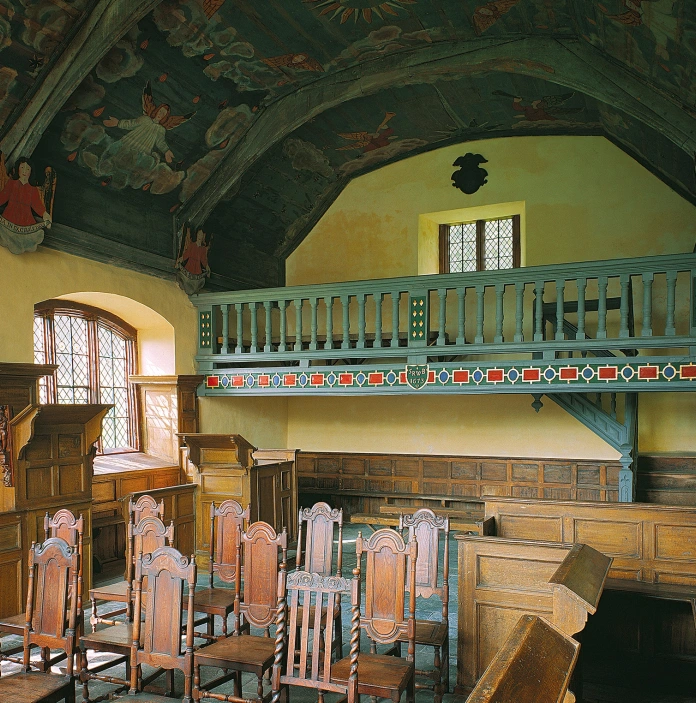
St Cadfan's Church, Tywyn
St Cadfan was a Breton missionary who arrived in the rural coastal town of Tywyn around 516 AD. Along with his followers, he established a monastery and settlement there before heading north-west to the more remote Ynys Enlli. You can follow in their footsteps along St Cadfan's Way pilgrim trail.
St Cadfan's Church has been a site of worship and pilgrimage ever since. Parts of the current building date from the 12th century - although the site itself has had a varied history including Viking raids and collapsing towers! The Church houses St Cadfan's Stone, one of the earliest known examples of written Welsh and 14th century effigies including the Weeping Knight, who cries when it rains. It's normally open to visitors between 10am and 5pm daily - find out more on the St Cadfan's Church website.
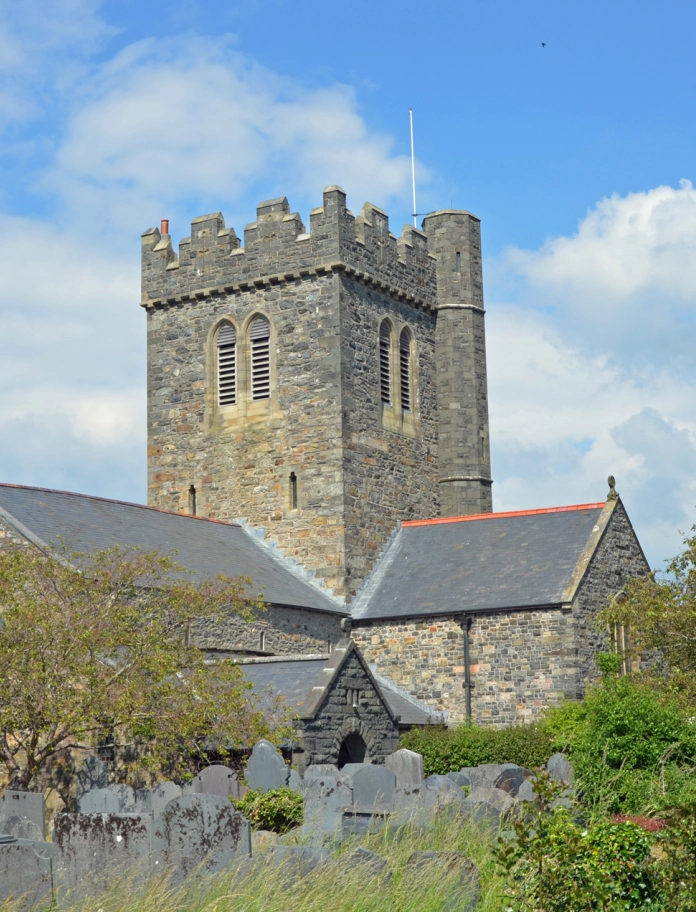
Ynys Enlli, Pen Llŷn
Venture into the far west of Wales, near the tip of our gorgeous Pen Llŷn (Llŷn Peninsula), and catch a boat from the cove of Porth Meudwy to explore the tiny Ynys Enlli (Bardsey Island). There's an astonishing amount of history within this mile-long, sacred space. A monastery was built here in the 6th century, and remains of its 13th century offspring, an Augustinian Abbey, can still be seen. So can an old Celtic cross and a Victorian chapel, which still remains open. In the summer months a chaplain is often in residence too, offering services to pilgrims today.
Ynys Enlli is also the final destination of the 130-mile North Wales Pilgrim's Way. Rightly so, too: twenty-thousand saints are said to be buried here. The national nature reserve also offers communion with nature, with 310 species of birds being recorded here, including choughs, puffins and Manx shearwaters. Grey seals make Bardsey their home too – and for a short while, so should you.
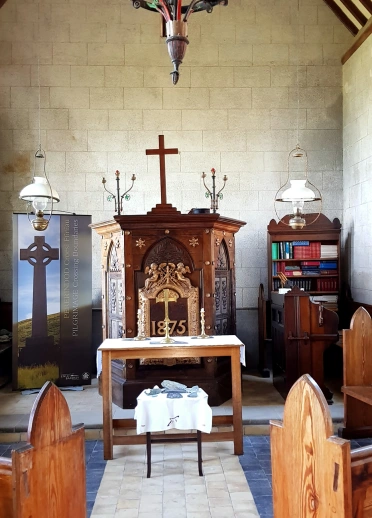
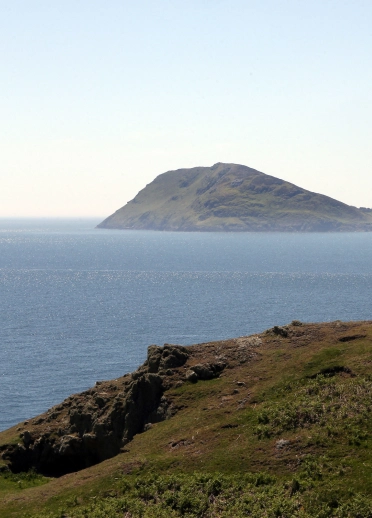
Conwy and LlandudnoConwy
St Tudno's Church, Great Orme, Llandudno
On Llandudno's famous Great Orme – the mini-mountain of limestone rising from the town's bay – St Tudno's Church sits very proudly and boldly. So it should: a chapel has been on this site since the 6th century, and parts of the current, lovely building still remain from the 12th.
Popular, well-attended outdoor services are also held here every summer, with unrivalled views gazing out to the Irish Sea. Visitors with dogs are welcome to attend – even if they join in with the hymns – and younger children are welcome to wander around during the service, and meet the Great Orme goats. Older children are also encouraged to try ringing the bell.
Outside service time, St Tudno’s Church is open every day for other visits from April to September, and on weekends, Wednesdays and bank holidays, weather permitting, for the rest of the year. The steep climb up is worth it – it's a higher calling indeed.
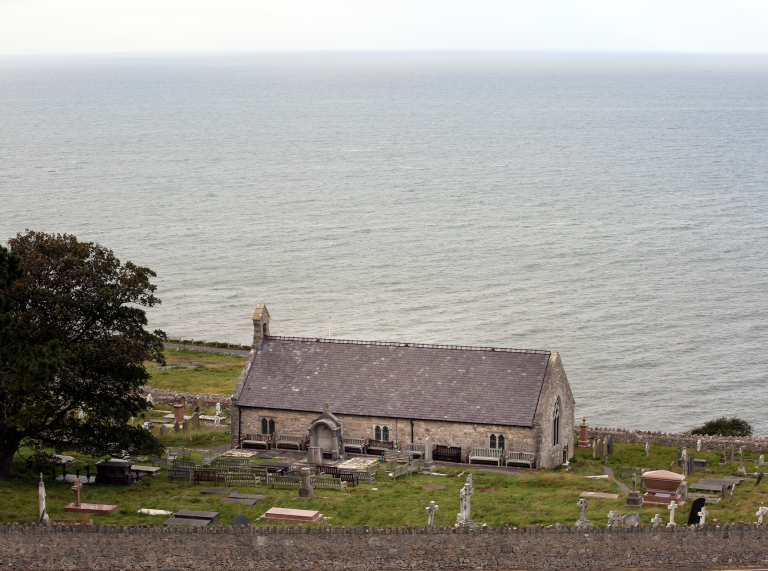
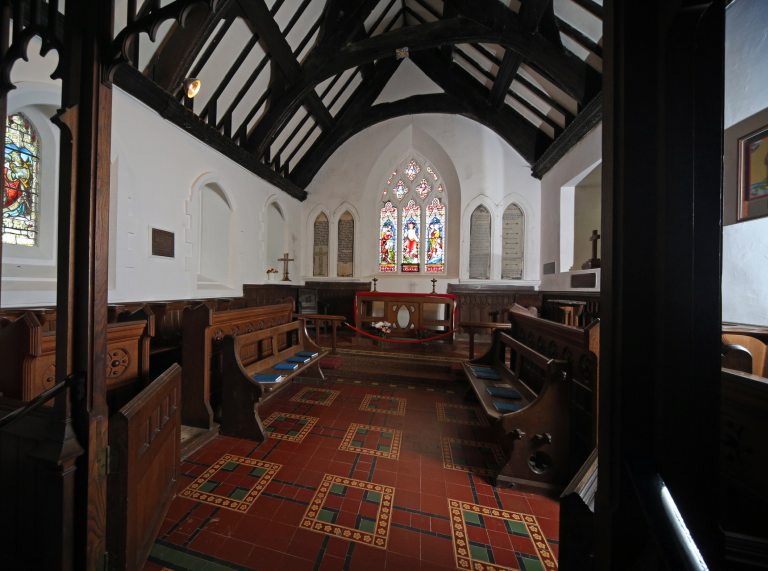
Chabad Retreat Centre, Llandudno
The Jewish community of North Wales has its home at the Chabad Retreat Centre, set in a handsome double-fronted building near the Orme Tramway. Shacharit and Shabbat services are held often, and publicised on the noticeboard outside, and more are held during the summer, when Llandudno is a popular destination for Orthodox Chareidi and Hassidim Jews.
Llandudno is also home to the first and only Jewish cemetery in North Wales, established in 2010 after a local worshipper, Bernard Blank, took the suggestion to Conwy Council. Before then, the nearest burial grounds were in Liverpool and Manchester. Based in the small village of Llanrhos just outside the town, as part of the Llanrhos Lawn Cemetery, it is run along liberal Judaism lines, and is a beautifully peaceful place with adjoining memorial gardens.
Denbighshire and Dee ValleyDenbighshire
Rug Chapel near Corwen
Here's another outwardly plain, private chapel hiding colourful secrets. In Rug Chapel near Corwen, 17th century colonel William Salesbury made a unique place of worship to his own high church tastes. Rose motifs, intricate wooden carvings, and surprisingly modern, abstract ceiling panels are among the many surprising delights for the eyes.
Managed by Cadw, the chapel is open several days a week from March to October. For more details and entrance prices, visit Rug Chapel's entry on the Cadw website.
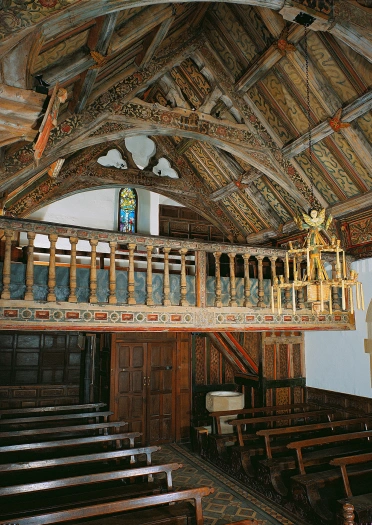
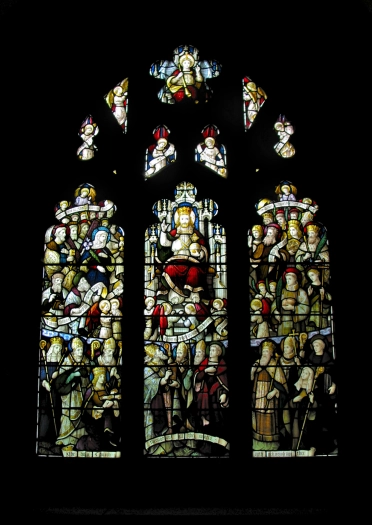
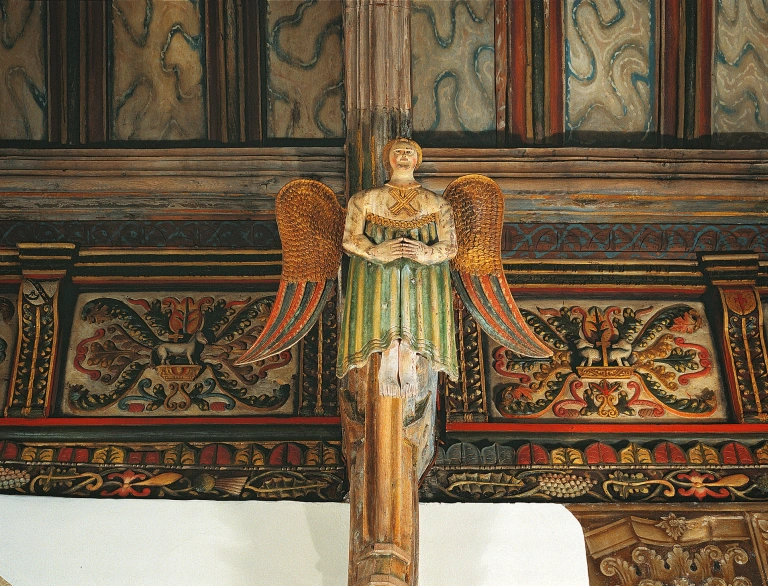
Valle Crucis Abbey, Llantysilio
Eleven miles east of Rug Chapel sits one of the best preserved Cistercian Abbeys in Wales. Valle Crucis Abbey (it translates as Valley of the Cross from Latin) was the last of the medieval era to be built. Unusually for a monastic ruin, you can access the first floor, including the dormitory and the abbot's lodgings. These were not particularly monastic in the their last days – the abbot even had his rooms heated, before the monasteries were dissolved during the bloody, brutal reign of Henry VIII.
Brilliantly, the abbey is free to visit throughout the year. It hosts lively events too, including medieval re-enactments and Easter egg hunts for children, big and small. Check the Valle Crucis website for details of events taking place.
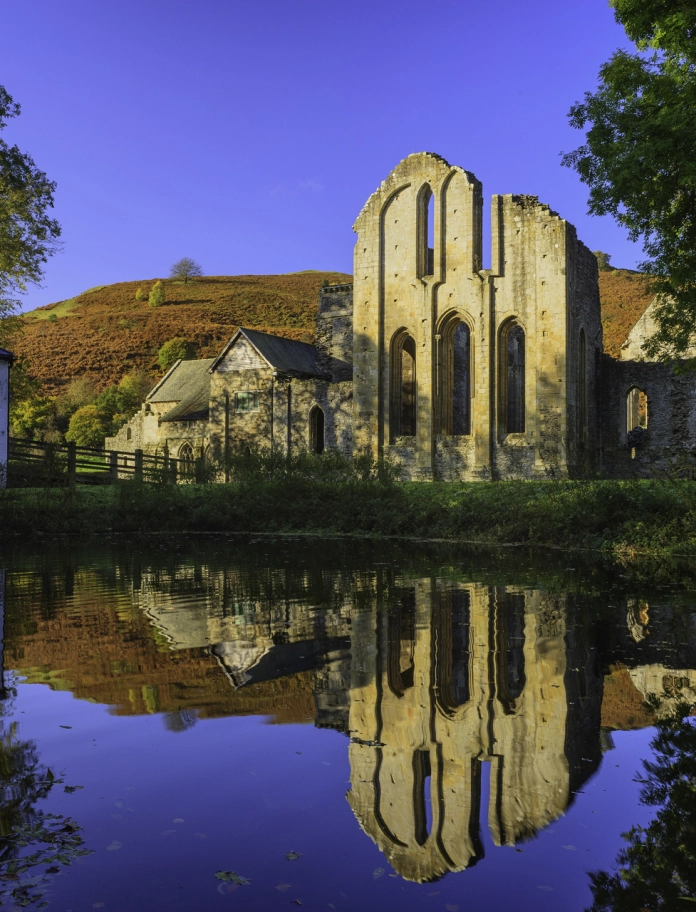
St Dyfnog's Church and Holy Well
A 17th century stained glass Jesse window depicting Jesus' family tree is a stunning aspect of this Vale of Clwyd church. It includes 23 identifiable human figures, all of whom are described on the St Dyfnog's Church website, and available in a booklet for purchase in this lovely corner of Clwyd. Incredibly, the window was said to have been removed to keep it safe during the Civil War, and replaced in 1661, where it still gleams today.
Organ and harp recitals are held regularly in the church too, as are church services, on Sundays and Wednesdays. In a copse nearby, you'll also find the mystical stone bath of St Dyfnog's Well, fed by a number of springs in the hillside.
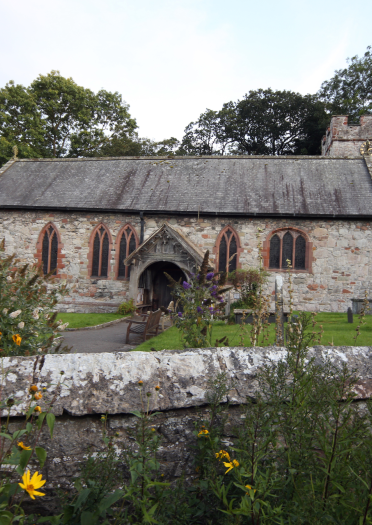
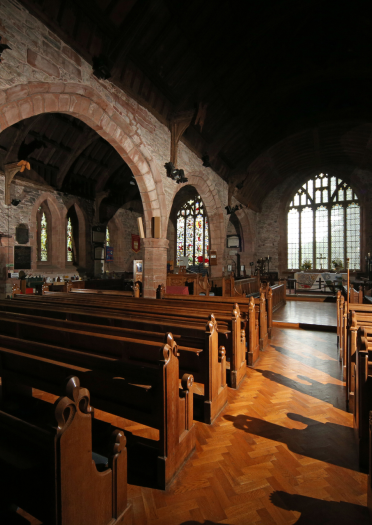
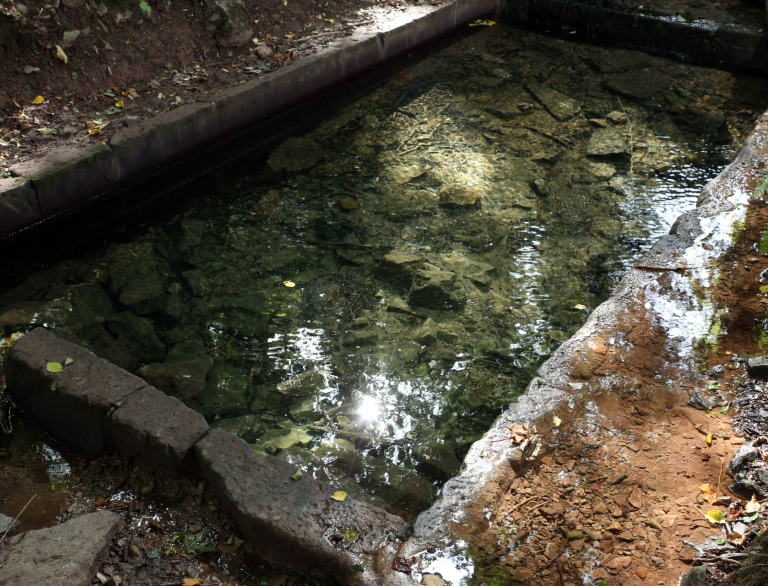
St Asaph Cathedral, Llanelwy
A cathedral on a very human scale, St Asaph is the smallest in Britain, in the second-smallest city in the UK. A religious site was founded here in the 6th century, but St Asaph's current, beautiful building was made in the 15th century. Its bishop here between 1601 and 1604 also has a pedigree that makes us proud: the Ty Mawr Wybrnant-born bible translator William Morgan, who is buried beneath the throne in the church. A beautiful copy of his original 1588 bible is also kept on public display.
After taking in all that impressive Welsh history, The Translators' Tearoom is recommended for a break (open from Monday to Saturday). It proudly serves local food: start with a sandwich made with bread from Conwy's Tan Lan Bakery, then have a Chilly Cow ice-cream from nearby Ruthin
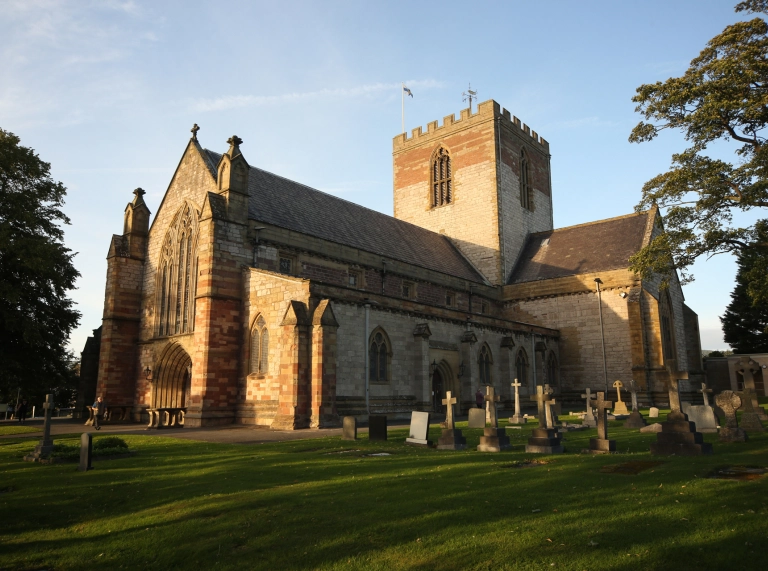
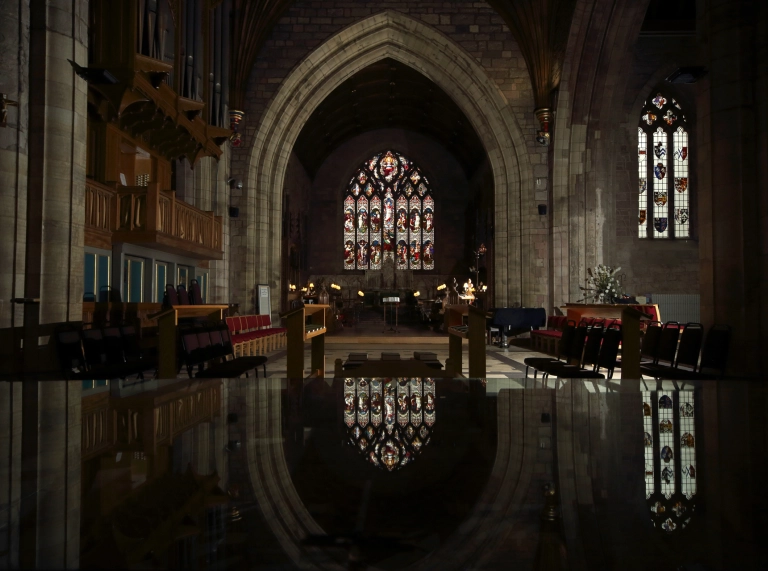
Flintshire and WrexhamFlintshire
St Winefride's Well, Treffynnon
The Lourdes of Wales: that was what pilgrims called St Winefride's Well. Legend says that it sprung up in the 7th century when St Winefride was restored to life by her uncle, St Beuno, after she was brutally attacked, and decapitated, by a man called Caradog. Thereafter, it is said, she became a nun, and Catholic pilgrims have sought the healing waters here ever since. Literature fans might also enjoy this top fact: it's referred to in the famous medieval British poem, Gawain and the Green Knight.
The Roman Catholic shrine next door is also a beauty: a two-storey, Perpendicular Gothic structure, erected in the early 16th century. A small museum and gift shop also sit peacefully on this site, the whole setting being one of solitude and peace, as befits the surviving woman it sanctifies.
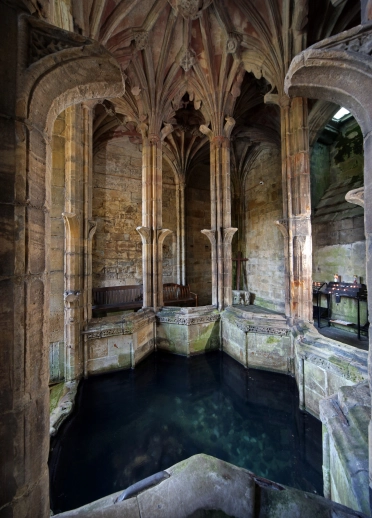
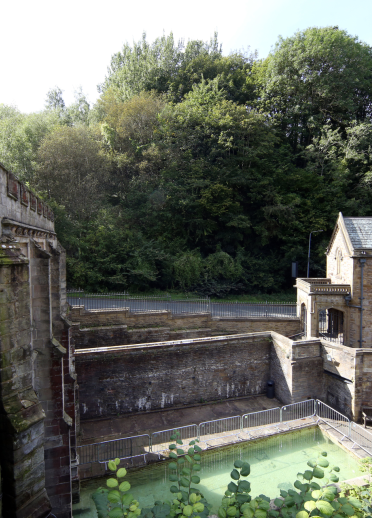
All Saints Church, Gresffordd
We end our journey on the borders, bathing in the sound of the bells of All Saints Church. These were mentioned in The Seven Wonders of Wales, a celebratory poem by an anonymous English writer well-known in the 18th century. The church from which they ring is beautiful too, a grand structure in the middle of a small, gentle village.
Its interior is beautifully maintained, with colourful stained glass, wooden roof beams, and a rood screen. There is also a memorial here to the 1934 Gresffordd mining disaster, including a painting, and a memorial book to remember those who died in the tragedy. Outside, a grove of ancient yew trees brings us back to the humbling passing of time. Like many of North Wales' religious sites, they remind us how far we have come, and how very human we are.

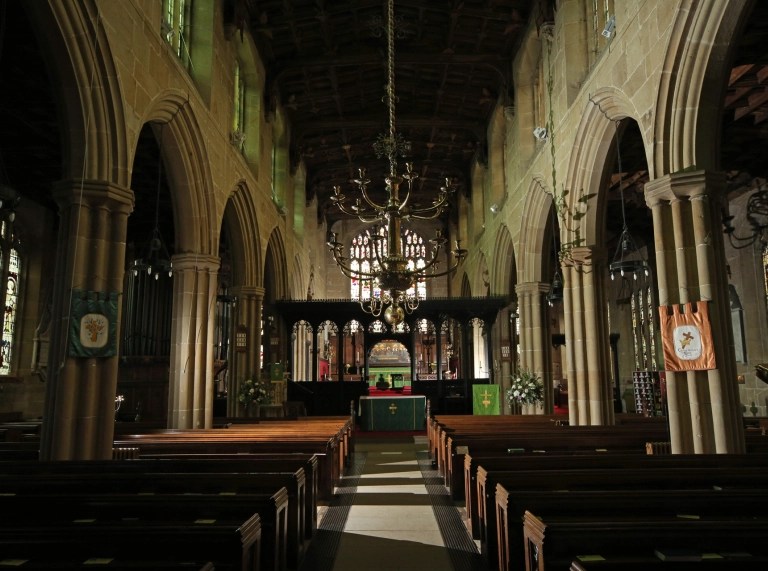
North Wales Pilgrim's Way
Back in the day, two trips to Ynys Enlli equalled one pilgrimage to Rome. Take some time out and follow in the spiritual footsteps of our ancestors by following this recently created trail. The North Wales Pilgrim's Way follows a 135 mile long distance waymarked walking route, between Basingwerk Abbey near Treffynnon, and Enlli. The route links 6th century churches and sites of religious significance across North Wales, taking in mountains, waterfalls, thousand year old crosses and stone circles.
